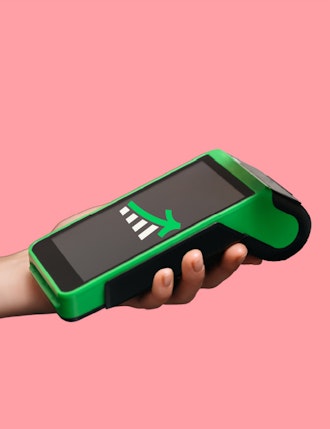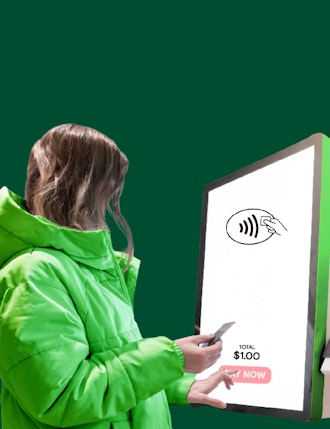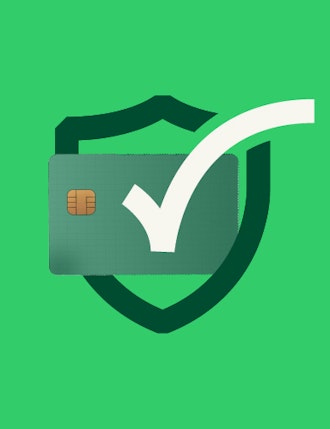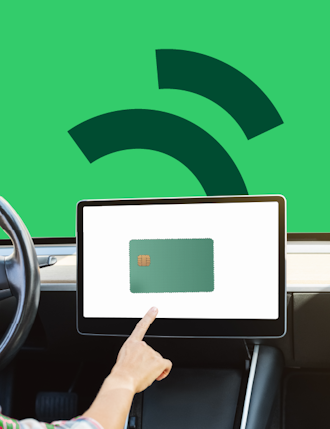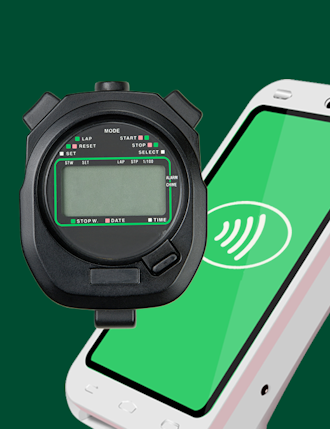The state of unattended payments in the UK: what’s working, what isn’t, and what needs to change

Key Insights
-
Use is both frequent as it is mainstream with six in ten people using unattended payments at least weekly.
-
The systems people interact with the most (self-checkouts, parking, fuel) are also where pain points cluster, suggesting a correlation between usage frequency and frustration.
-
Avoidance is very widespread with more than half saying they’ve avoided an unattended option due to bad experiences, with a sizable share having done so multiple times.
-
Consumers expect parking, fuel, and transit to become fully unattended in the next decade and they're also where pain is highest today. Fixing these first will have the biggest impact for operators in these verticals.
-
The results clearly identify the set of main drivers that outperform price and speed, the report breaks down exactly what matters most and why.
Don't have time to read more now? Sign up to our newsletter to get the latest insights directly in your inbox.
In 2025 we surveyed 3,008 adults across the US and UK to understand how consumers use, perceive, and expect unattended payments. Whether it’s self-checkouts and fuel pumps, EV charging and parking, the end goal is to pinpoint where adoption stalls, why it stalls, and how operators can unlock the next wave.
Our findings show us a world where usage is increasingly mainstream though not “everyday”, where frustration rises where exposure is the highest, and a bad interaction often turns a potential adopter into an active avoider.
We also map demographic and regional patterns, confidence at home vs. abroad, and the surprising places people still don’t foresee to pay unattended. Crucially, we identify what actually moves adoption and the most affected industries as these journeys trend more self-serve.
Over the past decade, unattended in-person touchpoints in the UK have grown rapidly, reshaping how people interact and, of course, pay. Whether we like it or not, our wallets keep ‘shrinking’ with more of us keeping everything on our phones, and increasingly using biometrics to unlock them. It’s not hard to imagine a near future where every payment is authorized with a glance or a thumbprint…no staff, no kiosks, no taps.
How often do you use self-checkouts or other unattended payment systems
Nearly six in ten respondents use self-checkouts or other unattended payment systems at least weekly, but only about one in eight do so daily.
Self-serve use is common, though not daily. In fact 57% use unattended systems at least weekly, while 44% use them less than weekly or never.
However, the age split paints a different picture as usage is highest among younger adults,: weekly-plus use is 75% for 25–34s and 65% for 18–24s, stepping down to 68% (35–44), 59% (45–54), 44% (55–64), and 39% (65+) among 65+, 59% use them less than weekly or never.
Regionally, weekly-plus usage is broadly consistent 51–62%, however daily use peaks in the South East (18%) and Wales (17%), versus Scotland 11%, Northern England 10%, Central England 11%, South West 6%.
Which unattended in-person payment systems do you find frustrating?
In terms of pain points: self-checkout in supermarkets is the top culprit across the board. These systems are frustrating 38% of respondents overall and rising steadily with age, from about a third of 18–24-year-olds to just over half of those 55+.
Parking meters follow a similar trend, with frustration rising from around 20% among the youngest group to 36% for those 65 and older, while fuel pumps show moderate and fairly consistent frustration across all age groups.
Meanwhile, younger adults are far more likely to be annoyed by vending machines (43% of 18–24s versus 14% of 65+) and to cite more ‘niche’ or ‘next-gen’ systems such as recycling-deposit machines or EV charging stations.
Looking at these patterns, it’s clear that frustration peaks where usage is highest. While we don’t have exact system-level usage data, self-checkouts, fuel pumps and parking meters are all everyday touchpoints and top the complaint list, whereas lower frequency options such as bike or scooter rental stations (4% frustration) or locker rentals (5%) see far fewer negative responses, even though failures in these systems can leave people literally stuck!
Ghermaine Henry, Head of Fuel & Mobility EMEA here at Aevi explains:
"The more customers rely on these touchpoints, the more chances there are for friction. That’s why it’s critical to strengthen the busiest journeys first, whether that’s checkout, fuel, or parking. By tackling frustration at its root, merchant enablers can start rebuilding trust where it matters most.”
Have you ever avoided using an unattended payment option because of a bad past experience?
Despite around 60% using self-serve at least weekly, more than half of respondents (51%) say they have avoided an unattended payment option at least once because of a bad past experience, 15% multiple times and 36% once or twice, while 36% report they have always used such systems without hesitation and 13% rarely use them at all.
When high avoidance rates occur on busy routes, the impact on providers in those sectors could be substantial.
Age patterns are especially interesting: younger adults report the most avoidance with 25% of 18–24 year-olds and around one in six 25–44s have steered clear of unattended payments multiple times due to a negative experience.
Yet the 45–54 group completely breaks this trend, with only 6% avoiding multiple times and nearly half (46%) saying they have always used unattended systems without hesitation.
This middle-aged cohort appears unusually at ease despite high day-to-day exposure, which may suggest that frequent use may build confidence rather than caution, and in any case goes counter the stereotypes of younger demographics being more at ease when interacting with everyday technology.
On the other hand, this counter-intuitive finding may also reflect higher expectations among younger users, who are quicker to penalize slow, unclear, or error-prone flows.
Have you ever used a fuel card for petrol, diesel, or EV charging? If so, how would you rate your typical payment experience using a fuel card?
Fuel cards, such as company-issued or specialist payment cards used to pay for petrol, diesel, or EV charging (e.g., fleet cards, charge cards) remain niche in the UK.
Over half of respondents (54%) have never used one and a further 13% aren’t sure what a fuel card even is. Meanwhile, around one in six (17%) have used a card for petrol/diesel only, while smaller groups report using one for EV charging (8%) or for both petrol/diesel and EV charging (8%).
Demographically speaking, men are nearly twice as experienced as women with roughly 41% having used some type of fuel card versus 24% of women. Women are also almost twice as likely to say they don’t know what a fuel card is.
Mobility and geography go hand in hand, and access to service stations, charging networks, and fleet programmes can vary by region, so we looked at fuel-card uptake through a regional lens to see where users are best served.
The South East shows the highest combined uptake (around one third), whereas the South West records the greatest share who have never used one (65%). That being said, among those who have used a fuel card, satisfaction is fairly high: 39% describe the payment process as “very easy” and a further 43% as “mostly fine,” leaving 17% reporting any level of frustration a smaller, but non-trivial portion.
Overall, fuel cards remain a niche payment option. For those who use them, the experience is generally straightforward and reliable, though reported frustrations mean energy retailers should stay vigilant.
What improvements would make in-person unattended payment more appealing to you?
When asked what would make unattended payments more appealing, people clearly prioritize ease, reliability, and clarity over speed and price.
Respondents chose easier payment options (27%), fewer payment failures (27%), and clearer instructions (27%) as biggest drivers, outpacing lower prices (22%) and faster transactions (22%).
Secondary options by importance include: better product choice (17%), more transparency on fees (15%), and accessibility (11%), whereas a small share say nothing needs improving (6%), while 25% say nothing would make them more appealing.
When examined together with earlier findings (which point to frequent use but high avoidance after bad experiences) we can trace a rather clear outline: Payment providers and their merchants need to make unattended experiences easier, functional, and as clear as they can in order to convert avoiders and to sustain weekly users.
Which one of these things would you not expect to have to use an unattended payment system to access?
A sizable portion of our survey base finds unattended payments plausible in almost any setting, but some scenarios still stretch belief.
Around a third of respondents say they would not expect to use an unattended system for lift rides (35%), public toilets (34%), church candles (32%), prescription pickup (31%), or even entry to their own building or room (31%).
Smaller, but still notable, fractions question hotel check-ins (21%), home utilities such as electricity or heating (22%), and school vending for supplies (17%).
Only 22% selected “none of the above,” suggesting most people can imagine self-service in many of these “stranger-than-fiction” cases, even if some still feel surprising to many.
And yet, versions of these already exist across the globe, with some of the most ‘mind-boggling’ examples being as closer to home as one might think: London boroughs, for instance, actively run pay-to-enter public toilets, with 50p fees and even contactless access trials at staffed facilities. Meanwhile major hotel groups now let guests unlock rooms via mobile keys in their custom apps and US retailers such as Costco have already rolled out unattended prescription-pickup lockers, and paid phone-charging lockers are now very common in malls and airports.
How confident do you feel using unattended payment systems when travelling abroad?
As we’ve seen, at home, unattended is routine, but what happens abroad? ‘Foreign’ systems, new languages, unfamiliar interfaces, perhaps even different card rules, all introduce enough impediments to change the picture.
Confidence with unattended payment systems drops notably when people travel abroad. Only 12% feel very confident using them in most countries, and another 24% are mostly confident but admit to struggles in certain places or with specific systems.
Roughly a quarter express low confidence: 12% say they often run into issues and 14% avoid such systems altogether when overseas. The rest either haven’t encountered unattended payments abroad or say it doesn’t apply to them.
Gender differences are clear here as men report higher comfort overall, with 15% “very confident” compared with 9% of women, and 28% “mostly confident” versus 20% of women. Women are more likely to be cautious or disengaged, showing slightly higher rates of low confidence and of having never encountered these systems abroad.
Overall, while domestic use is common, travel adds enough uncertainty, especially for women. Language, unfamiliar tech, and payment compatibility contribute to significantly lowering consumers’ confidence.
Which of these do you think are likely to become fully or mostly unattended within the next 10 years?
So what’s the world looking like in the next ten years? Probably more and more unattended by default, with phones and biometrics authorizing routine purchases and staff stepping in only for exceptions or support.
Looking ahead, the public expects unattended technology to expand well beyond today’s self-service checkouts. Petrol stations (39%), public transport ticketing and boarding (36%), and parking garages or lots (36%) top the list of places people think will become fully or mostly staff-free within the next decade.
Nearly three in ten also anticipate supermarkets moving in that direction, and around one in five foresee fast-food restaurants (22%), hotels (23%), or gyms (20%) following suit.
By contrast, few expect widespread automation in pharmacies (11%), convenience stores (10%), or cafés and coffee chains (7%), and a quarter of respondents believe human staff will remain the norm in most settings.
Taken together, this data highlights a dividing line between acceptance of automation in routine transactions versus resistance in more personal or sensitive interactions.
Do you have any concerns about the increasing use of unattended payment systems?
Concerns are widespread (with only 12% saying they have none) however what really stands out is how practical worries outweigh principle.
The top concern is machines breaking or not working (53%), followed by job-loss worries (46%) and not getting help when needed (41%). Practical issues like failures and lack of support still outweigh other considerations, but job security remains a significant concern.
Meanwhile, privacy (28%) and payment/security (25%) also register, especially given how we usually perceive these going hand in hand, one can assume that privacy + security concerns have the same weight as machines breaking (53%)
Read together, the signal is clear: if journeys were seamless, transparent, secure and resilient, the majority of people would likely keep using self-serve even if broader, more public debates persist.
For merchants, acquirers, and ISVs, that means focussing on reliability (fewer failures, clear fallbacks to help etc...), enhancing privacy and security to gold standards, keeping terminals remotely updatable, and using payment orchestration to roll out fixes and features smoothly and consistently.
Meanwhile, younger adults are most sensitive to privacy, with 41% of 18–24s and 39% of 25–34s citing personal-data risks, compared with just 17% of 45–54s and around a quarter of older groups.
By contrast, concern over reliability and assistance grows steadily with age, in fact, fear of machines breaking rises from 44% of 18–24s to an outstanding 65% of those aged 65+. Payment-security worries also peak in the oldest brackets (33–35%).
Gender patterns are modest but clear: women are more likely than men to worry about the broader topic of job losses (51% vs. 41%), over machine failures (55% vs. 50%), and over lack of help (43% vs. 38%).
What’s one positive thing you associate with unattended payments or self-checkouts?
Time for the positives! When people talk about the upsides of unattended services, they emphasize saving time and reducing hassle. The leading positives are speed and convenience (38%), and 24/7 availability (17%), together these account for 55% of all mentions. Secondary gains are shorter queues (14%) and fewer awkward interactions (7%). Still, 23% say there’s nothing they like about these systems, tough crowd! For retailers, the main benefit is clear: speeding up interactions, reducing friction, and improving overall customer satisfaction.
Sarah Koch, our Director of Marketing & Communications had this to say regarding these findings:
"The age split here is sharper than expected and goes beyond usage tapping into the concept of its perceived value, once again showing how Gen Z is quickly changing the narrative. They are used to omnichannel experiences, smooth checkouts, and instant support and crucially, they switch easily when value or UX falters"
Read all about how the younger generation is creating new trends and changing the landscape at: Gen Z: Shaping the future of payments.
Younger adults clearly see a payoff with this technology as speed is cited by 29% of 18–24s and 25–34s (vs 12% at 65+), and convenience by 16–21% across 18–44 (vs 14% at 65+).
Meanwhile Gen Z and Millennials use self-serve to sidestep social awkwardness: 19% (Gen Z) and 16% (Millennials) citing fewer social interactions as a plus.
By contrast, older adults increasingly reject the technology altogether: “nothing I like” climbs from 3% at 25–34 to 43% at 65+. Even where older groups still see some upside such as the 24/7 access (at 17–22%), the enthusiasm is far lower than among younger cohorts.
This outlines a generational value gap. Younger consumers view self-served systems as tangibly time-saving and hassle-reducing whereas many older adults remain unconvinced that it offers any benefit whatsoever.
In conclusion
This research confirms that people use unattended payments today and will use them even more in the future, potentially making them the norm in smart, largely unattended cities, however getting there depends on an experience that is reliable enough to keep them coming back.
Trust needs to be a key focus for merchant payment enablers, the touchpoints people hit most are also where frustrations cluster, and if that’s not enough, a single poor interaction can turn a regular user into an avoider.
What changes behavior is right before our eyes and it’s in getting the very ‘basics’ of the payment journey done flawlessly, through clear entry, systems that work first time, every time and help that’s available when it’s needed.
Our CEO, Mike Camerling commented:
“Every broken tap turns a customer into someone who avoids self-service. But when it just works, the flow is smooth, the tech is reliable, and support is there if needed - self-service stops being second best. It becomes the natural choice.”
Younger consumers in particular value ease and time savings whereas older demographics who are overall less keen on adoption, require proof of resilience. Customers are more confident using these systems ‘at home’ than abroad, especially the women.
Where products like fuel cards are used, the experience is mostly smooth, however awareness and adoption of such systems is still quite low.
Fast-forward 10 years from now, and the first places to go entirely ‘cashier-free’ (according to our respondents) will be the most repetitive, high-volume journeys such as fuel / charging, parking and transit, so fixing any failure points there is likely to carry the most impact in the long run.
Curious how the world’s largest consumer market is approaching unattended payments? Dive into our companion piece, The future is unattended: A US playbook and reality-check, and see how American consumers are shaping what comes next.
Methodology:
This report is based on a representative survey of 1,004 adults across the United Kingdom. The data was analysed by key demographic and geographic factors, including age range, gender and region. Regional-level findings are only reported where the sample size was sufficiently robust to support meaningful analysis.

